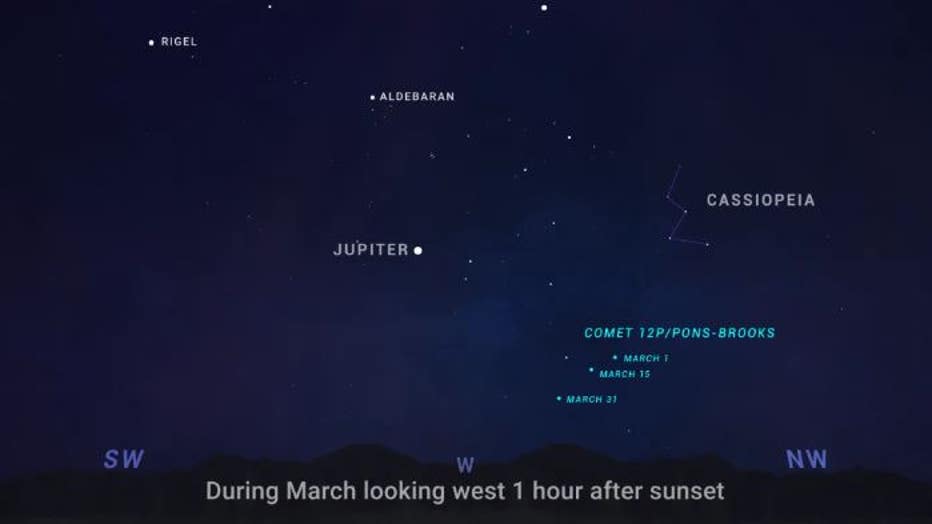'Devil comet' could become visible to the naked eye this month

Green Comet flies close to Earth for first time in 50,000 years
Footage posted by Matt Graves on January 28 shows the green comet in the sky as it made its approach towards Earth. (Credit: Matt Graves via Storyful)
LOS ANGELES - Look up into the night sky this month, and you'll get a glimpse of a massive comet that could be visible to the naked eye.
According to Space.com, the comet 12P/Pons-Brooks, also known as the "devil comet," will be visible to most people on Earth while it completes its 71-year orbit around the sun.
Known as an ice volcano comet, according to NASA, its passage near the sun prompts it to erupt from exposure to solar radiation, which cracks open large icy shells that deliver a show of ice and gas shooting out of the base, making the comet appear larger and brighter as it gets closer to Earth.
How you can view the comet
NASA says the comet will start to become visible to the unaided eye by late March and into April.
Light pollution makes viewing the comet from cities reasonably tricky, but if you can go to a dark area like the desert, you should be able to catch a glimpse of the celestial object.
Currently, 12P is moving through the constellations Andromeda and Pisces, visible in the Northern Hemisphere. It will be visible in the Southern Hemisphere when it reaches its closest point to Earth in June.

Sky chart showing the changing position of Comet 12P/Pons-Brooks during the month of March.
Assuming the comet's passage to the sun sparks bursts of gas and radiation, making it brighter, it could be observed closer to April without needing a telescope or binoculars.
But NASA says that even without any additional brightening, 12P/Pons-Brooks is expected to reach peak brightness by the end of March.
Once 12P slingshots around the sun in late April, it will make its closest approach to Earth on June 2, Space.com reports.
Stargazers can also glimpse 12P during the total solar eclipse on April 8, when it will be orbiting close to the obstructed sun. If the radiation from the sun causes gasses on the comet to erupt, viewers could be in for a treat during totality.

